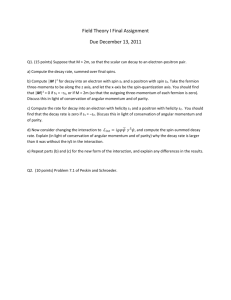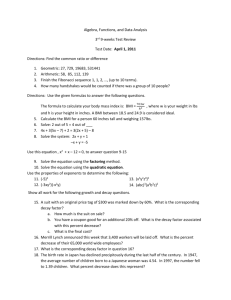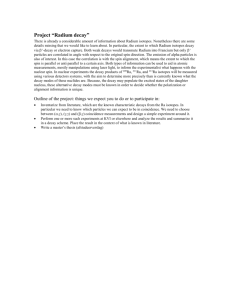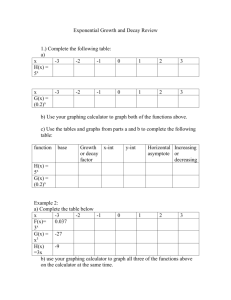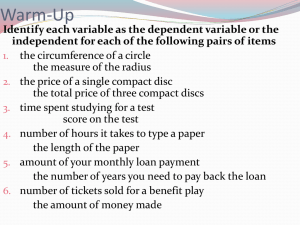techmath26
advertisement
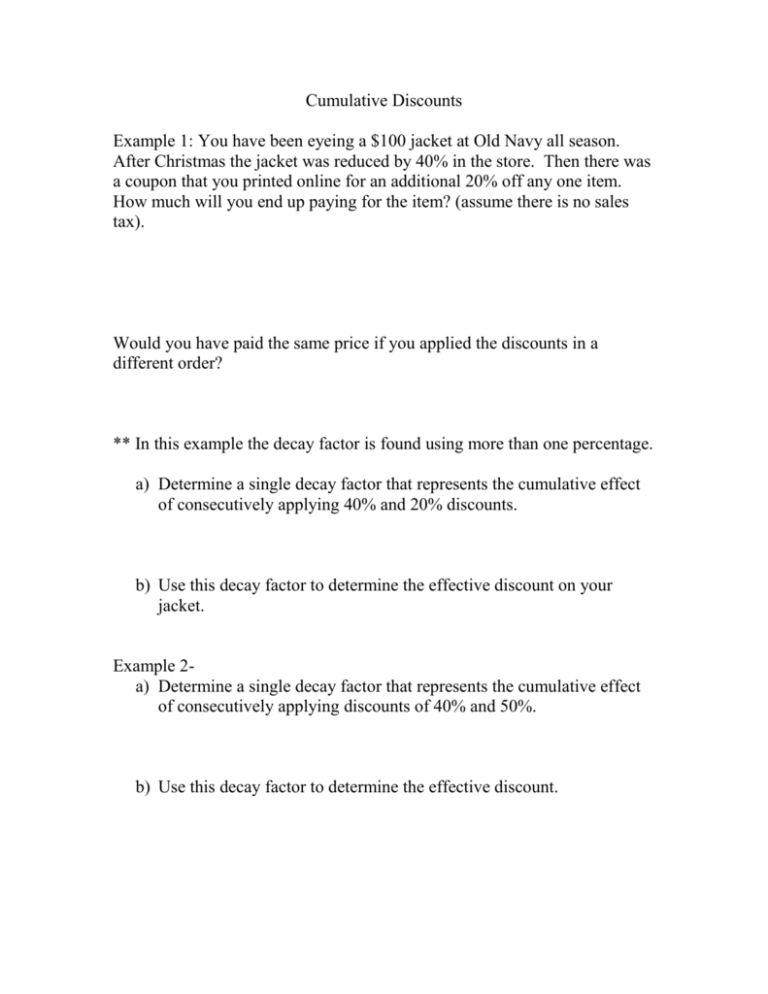
Cumulative Discounts Example 1: You have been eyeing a $100 jacket at Old Navy all season. After Christmas the jacket was reduced by 40% in the store. Then there was a coupon that you printed online for an additional 20% off any one item. How much will you end up paying for the item? (assume there is no sales tax). Would you have paid the same price if you applied the discounts in a different order? ** In this example the decay factor is found using more than one percentage. a) Determine a single decay factor that represents the cumulative effect of consecutively applying 40% and 20% discounts. b) Use this decay factor to determine the effective discount on your jacket. Example 2a) Determine a single decay factor that represents the cumulative effect of consecutively applying discounts of 40% and 50%. b) Use this decay factor to determine the effective discount. Example 3- Your fast-food franchise is growing faster than you had ever imagined. Last year you had 100 employees statewide. This year you opened several additional locations and increased the number of workers by 30%. With demand so high, next year you will open new stores nationwide and plan to increase your employee roll by an additional 50%. a) Determine the growth factor corresponding to a 30% increase. b) Apply this growth factor to calculate your current workforce. c) Determine the growth factor corresponding to a 50% increase. d) Apply this growth factor to your current workforce to determine the projected number of employees next year. e) Starting from last year’s workforce of 100, write a single-chain of multiplications to calculate the projected number of employees. Example 4- You purchased $1000 of recommended stock last year and watched it rise by 30%. Unfortunately, the economy turned downward, and your stock fell 30% from last year’s high. Have you made or lost money on your investment? a) Determine the growth factor corresponding to the 30% increase. b) Determine the decay factor corresponding to the 30% decrease. c) Form a single factor of growth/decay (product of two answers above) d) Does your answer in part c represent a growth or decay factor? How can you tell? e) What is your current value of stock? f) What is the cumulative effect ( as a percent change) of applying a 30% increase followed by a 30% decrease? Practice Questions: 1) A $300 suit is on sale for 30% off. You present a coupon at the register for an additional 20% off. a) Determine the decay factor corresponding to EACH percent decrease b) Use these decay factors to determine the price you paid for the suit. 2) Your union has just negotiated a 3yr contract containing annual raises of 3%, 4%, and 5% during the term of the contract. Your current salary is $42,000. What will you be earning in 3 years? 3) You anticipated a large demand for a popular toy and increased your inventory of 1600 by 25%. You sold 75% of your inventory. How many toys remain? 4) You deposit $2000 in a 5yr certificate of deposit that pays 4% interest compounded annually. Determine to the nearest dollar, your account balance when your certificate comes due (in 5 yrs). 5) Budget cuts have severely crippled your department over the last few years. Your operating budget of $600,000 has decreased 5% in each of the last three years. What is your current operating budget? 6) When you became a manager, your $60,000 annual salary increased 25%. You found the new job too stressful and requested a return to your original job. You resumed your former duties at a 20% reduction in salary. How much are you making at your old job after the transfer and return?





